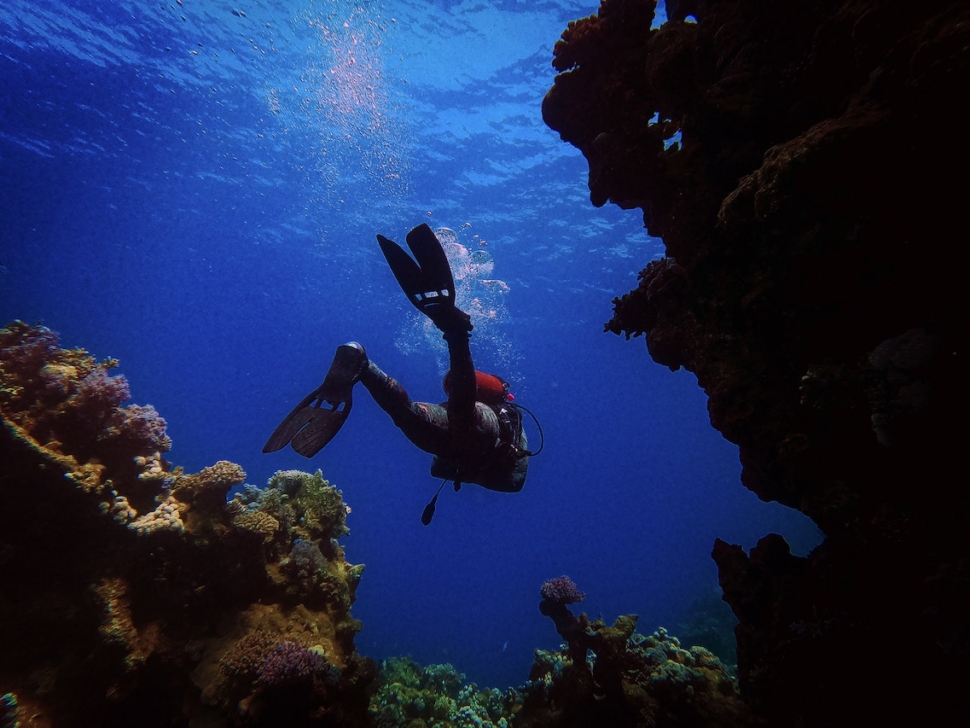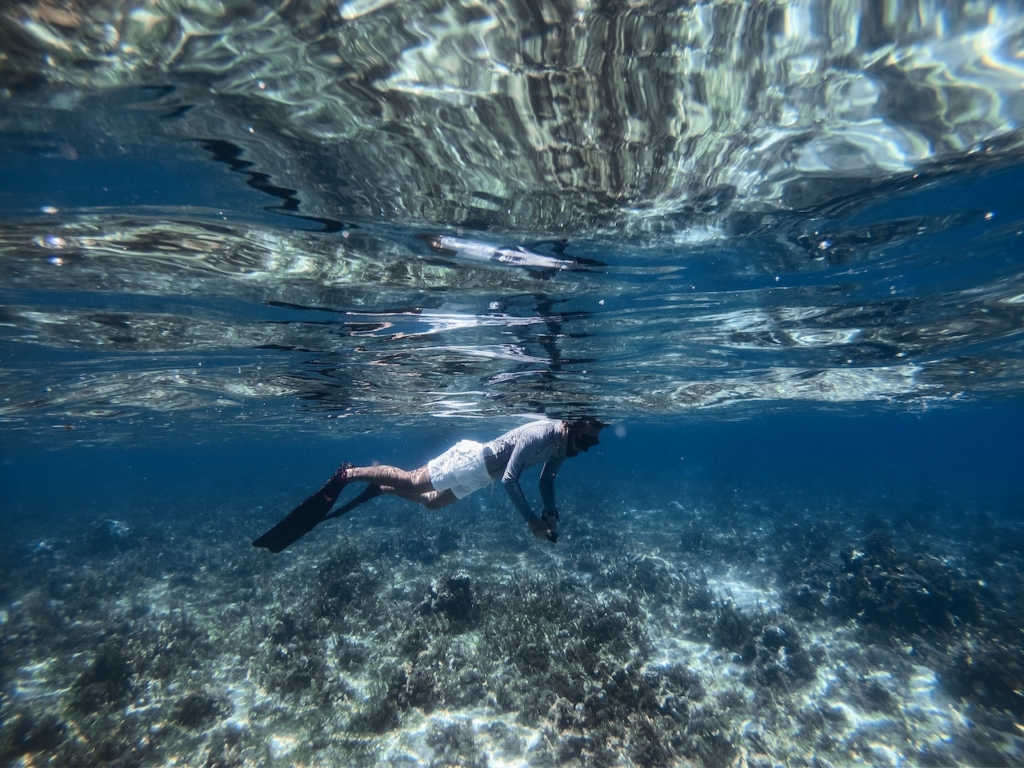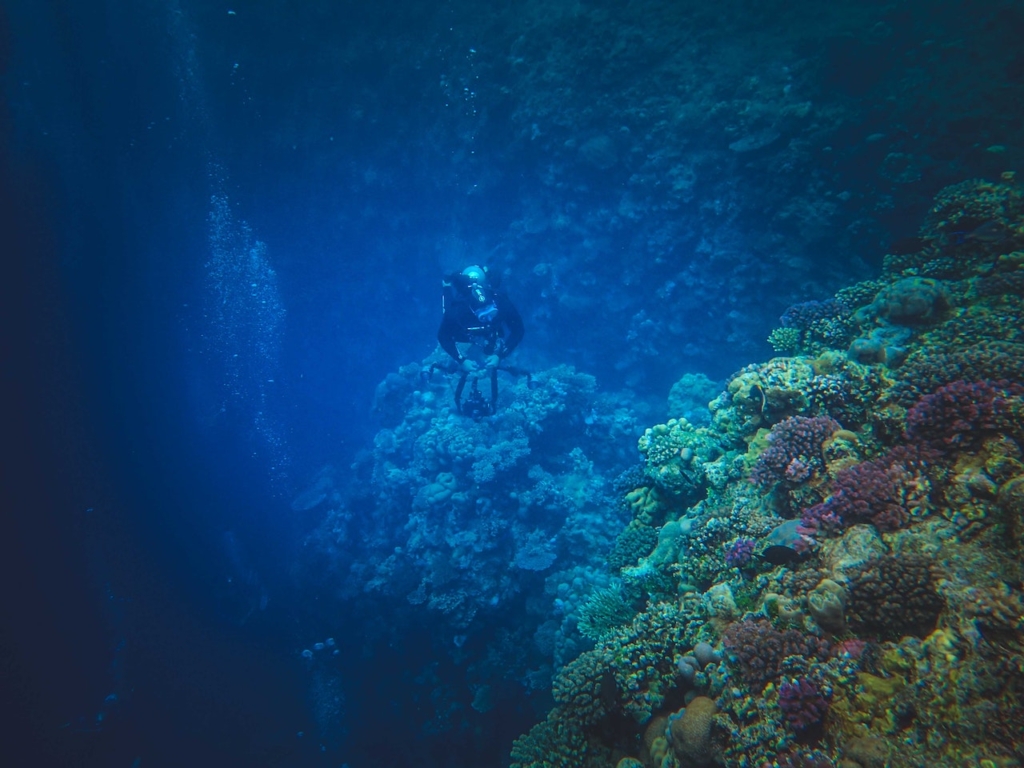A diving knife is an essential tool for any scuba diver. Whether you’re exploring the depths of the ocean or simply diving in a local lake, a diving knife can come in handy in a variety of situations. From cutting through fishing lines to freeing yourself from entanglements, a good diving knife can be a lifesaver.
Diving knives come in many different shapes and sizes, each designed for a specific purpose. Some knives are designed for cutting through thick ropes and lines, while others are better suited for prying open shells or cutting through tough materials. The type of diving knife you choose will depend on your individual needs and preferences.
When choosing a diving knife, it’s important to consider the materials and durability of the knife. A good diving knife should be made from high-quality materials that can withstand the harsh conditions of the underwater environment. Additionally, the knife should be easy to maintain and care for to ensure its longevity. By choosing a well-made, durable diving knife, you can rest assured that you’ll have a reliable tool by your side on every dive.
Key Takeaways
- A diving knife is an essential tool for scuba divers that can be used in a variety of situations.
- Diving knives come in different shapes and sizes, each designed for specific purposes.
- When choosing a diving knife, it’s important to consider the materials, durability, and maintenance requirements to ensure a reliable tool.
Diving Knife Basics
Definition
A diving knife is an essential tool for divers, used for a variety of purposes such as cutting through fishing lines, ropes, and seaweed, prying open shells, and defending against aggressive marine life. It is typically made of stainless steel or titanium and has a serrated edge for cutting through tough materials.
Diving knives come in various shapes and sizes, with some designed for specific purposes such as spearfishing or wreck diving. The most common types of diving knives are the blunt-tip and pointed-tip knives. Blunt-tip knives are safer to use as they are less likely to accidentally puncture the diver or damage their equipment, while pointed-tip knives are better for more precise cutting.
Importance
A diving knife is an essential safety tool for divers as it can be used to free themselves or others from entanglements, cut through lines in emergency situations, and defend against aggressive marine life. It is important to choose a diving knife that is reliable and durable, with a comfortable grip and a sheath that is easy to access and secure.
When selecting a diving knife, it is important to consider the type of diving you will be doing, the environment you will be in, and your personal preferences. Some divers prefer a smaller knife that can be easily stowed away, while others prefer a larger knife for more heavy-duty cutting tasks.
Overall, a diving knife is a crucial tool for any diver and should be included in their diving gear. It is important to practice using the knife in a safe and controlled environment before using it in an emergency situation.
Types of Diving Knives
Fixed Blade
Fixed blade diving knives are the most common type of diving knife. They are designed to be sturdy and reliable, with a blade that is permanently attached to the handle. The blade on a fixed blade diving knife can range from 3 to 7 inches in length, depending on the intended use.
One of the main advantages of a fixed blade diving knife is its strength and durability. The blade is typically made from high-quality stainless steel or titanium, which can withstand the harsh underwater environment. Additionally, the lack of moving parts makes fixed blade diving knives less prone to failure.
Folding Knife
Folding diving knives are a more compact and portable option compared to fixed blade knives. They are designed with a hinged blade that can be folded into the handle when not in use. This makes them easier to carry and store, but also means they are not as strong as fixed blade knives.
Folding diving knives typically have a blade length of 2 to 4 inches, which is sufficient for most underwater tasks. They are often made from stainless steel or titanium, but may have a lower quality blade compared to fixed blade knives.
One advantage of folding diving knives is their versatility. They can be used for a variety of tasks, from cutting fishing line to opening clams. Additionally, the compact size of folding knives makes them a good choice for divers who want to minimize their gear.
Overall, both fixed blade and folding diving knives have their advantages and disadvantages. Choosing the right type of knife depends on the individual diver’s needs and preferences.
Materials and Durability
Stainless Steel
One of the most common materials used for diving knives is stainless steel. Stainless steel is a durable and corrosion-resistant material that can withstand the harsh marine environment. It is also relatively affordable and easy to sharpen.
There are different types of stainless steel used for diving knives, and the most common ones are 304 and 316. 304 stainless steel is a basic alloy that is commonly used in kitchen appliances and cutlery. It is affordable and easy to maintain, but it is not as corrosion-resistant as 316 stainless steel.
316 stainless steel, on the other hand, is a marine-grade alloy that is highly resistant to corrosion. It contains molybdenum, which makes it more durable and resistant to pitting and crevice corrosion. It is a bit more expensive than 304 stainless steel, but it is a better choice for diving knives that will be exposed to saltwater.
Titanium
Titanium is another popular material used for diving knives. It is a lightweight and strong metal that is highly resistant to corrosion. It is also non-magnetic, which is important for divers who use compasses.
Titanium is more expensive than stainless steel, but it is also more durable and long-lasting. It is also hypoallergenic, which makes it a good choice for divers with sensitive skin.
One of the downsides of titanium is that it is harder to sharpen than stainless steel. It also tends to be more brittle, which means that it can chip or break if not used carefully.
In summary, both stainless steel and titanium are good materials for diving knives. Stainless steel is more affordable and easier to sharpen, while titanium is more durable and corrosion-resistant. The choice between the two will depend on the diver’s needs and preferences.
Features of a Good Diving Knife
Size and Weight
A good diving knife should be compact and lightweight enough to be easily carried by the diver. A knife that is too heavy or bulky can be cumbersome and may even become a hazard underwater. The length of the blade should also be considered, as a blade that is too long may be difficult to control in tight spaces. A good diving knife should have a blade length of around 4-6 inches, which is long enough to be effective but not too long to be unwieldy.
Edge Type
The type of edge on a diving knife is an important consideration. A serrated edge is useful for sawing through tough materials such as rope or thick seaweed, while a straight edge is better for slicing through softer materials like fish or kelp. Some diving knives have both a serrated and straight edge, which can be useful in a variety of situations.
Handle Design
The handle of a diving knife should be designed for a secure grip, even when wet. A textured or rubberized handle can help prevent the knife from slipping out of the diver’s hand. The handle should also be large enough to accommodate the diver’s hand while wearing gloves. Some diving knives have a molded handle that is ergonomically designed for a comfortable grip, while others have a simple, straight handle.
Overall, a good diving knife should be designed with safety and functionality in mind. The knife should be easy to carry, have a blade length and edge type appropriate for the intended use, and have a handle that provides a secure grip. By considering these factors, divers can choose a knife that will serve them well on their underwater adventures.
Maintenance and Care
Maintaining and caring for your diving knife is essential to ensure its longevity and effectiveness. Proper maintenance and care can also prevent rust, corrosion, and other forms of damage.
Cleaning
After each dive, the diving knife should be thoroughly cleaned with freshwater to remove any salt, sand, or debris. It is recommended to use a soft-bristled brush to remove any stubborn debris. After cleaning, the knife should be dried with a soft cloth to prevent water spots and corrosion.
Lubrication
To prevent rust and corrosion, it is recommended to lubricate the diving knife regularly. A thin layer of silicone or mineral oil can be applied to the blade and handle to protect against moisture. Avoid using petroleum-based products as they can damage the rubber components of the knife.
Storage
Proper storage is crucial to prevent damage to the diving knife. The knife should be stored in a cool, dry place away from direct sunlight. It is recommended to store the knife in a sheath or protective case to prevent scratches and other forms of damage.
Inspection
Before each dive, the diving knife should be inspected for any signs of damage or wear. Check the blade for any nicks or chips, and ensure the handle and sheath are in good condition. If any damage is found, the knife should be repaired or replaced before the next dive.
Sharpening
A sharp diving knife is essential for safety and effectiveness. The knife should be sharpened regularly to maintain its sharpness. It is recommended to use a sharpening stone or diamond file to sharpen the blade. Avoid using electric sharpeners as they can damage the blade.
By following these maintenance and care tips, divers can ensure their diving knife is always in top condition, ready for any situation that may arise underwater.
Safety Guidelines
When it comes to diving knives, safety is of utmost importance. Here are some guidelines to follow to ensure a safe and enjoyable diving experience:
1. Proper Handling
Always handle your diving knife with care and respect. Make sure it is securely fastened in its sheath and never point it at yourself or others. When passing a knife to someone else, always handle it by the handle and never by the blade.
2. Proper Storage
When not in use, store your diving knife in a safe place where it cannot be accidentally accessed by children or pets. Make sure the blade is clean and dry before storing it to prevent rust and corrosion.
3. Proper Use
Use your diving knife only for its intended purpose, which is cutting through underwater obstacles and freeing yourself from entanglements. Never use it as a weapon or to pry open objects.
4. Proper Maintenance
Regularly inspect your diving knife for any signs of damage or wear and tear. Sharpen the blade as needed and keep it clean and dry to prevent rust and corrosion. If the knife becomes damaged or dull, replace it immediately.
5. Proper Training
Before using a diving knife, make sure you have received proper training on how to handle and use it safely. Practice using the knife in a controlled environment before taking it on a dive.
By following these safety guidelines, divers can ensure a safe and enjoyable diving experience with their diving knife.
Buying Guide
When looking to buy a diving knife, there are a few key features to consider to ensure that you choose the best product for your needs. Here are some of the most important factors to keep in mind:
Blade Material
The material of the blade is an important factor to consider when choosing a diving knife. Stainless steel is a popular option due to its durability and resistance to rust and corrosion. However, there are other materials to consider, such as titanium and ceramic. It is important to choose a blade material that is strong enough to handle the tasks you will be using it for, while also being resistant to the harsh conditions of saltwater.
Blade Size and Shape
The size and shape of the blade will depend on the type of diving you will be doing. A longer blade is ideal for spearfishing and cutting through tough materials, while a shorter blade is better for general tasks such as cutting lines and ropes. The shape of the blade can also vary, with options such as straight, serrated, and pointed blades. Consider the tasks you will be performing underwater to determine the best blade size and shape for your needs.
Handle Material and Grip
The handle of the diving knife should be comfortable to hold, even when wet. Look for a handle made from a non-slip material such as rubber or textured plastic. The grip should be secure and easy to hold, even when wearing gloves. Some diving knives also come with a lanyard or sheath to keep the knife secure when not in use.
Additional Features
Some diving knives come with additional features such as a serrated edge, a line cutter, or a blunt tip for prying. These features can be useful for specific tasks, so consider what tasks you will be performing when choosing a diving knife. However, be aware that additional features can also add weight and bulk to the knife, which may not be ideal for all divers.
By considering these factors when choosing a diving knife, you can ensure that you select a product that is durable, reliable, and suited to your specific needs.
Conclusion
Diving knives are an essential tool for any diver, whether you are a beginner or an experienced professional. They offer a variety of uses, from cutting through tangled lines to defending against aggressive marine life.
When choosing a diving knife, it is important to consider the blade material, size, and shape. Stainless steel is a popular choice due to its resistance to rust and corrosion, while titanium is stronger and lighter. The blade size and shape should fit the user’s needs and preferences, with options such as pointed or blunt tips and serrated or straight edges.
Other factors to consider when selecting a diving knife include the handle material and grip, as well as the sheath design and attachment options. A comfortable and secure grip is crucial for safety and ease of use, while a durable and accessible sheath can make all the difference in emergency situations.
Overall, a good diving knife should be reliable, durable, and versatile. By choosing the right knife for your needs and taking proper care of it, you can ensure a safer and more enjoyable diving experience.
Frequently Asked Questions
What is a diving knife used for?
A diving knife is a tool that is used by divers for various purposes such as cutting through fishing lines, ropes, and seaweed. It is also used for self-defense and as a tool for prying open oysters and clams.
Should you carry a knife when diving?
It is highly recommended that divers carry a knife when diving. It is an essential safety tool that can be used in emergencies. A diving knife can be used to cut through entangling fishing lines, ropes, or seaweed. It can also be used to defend oneself against aggressive marine life.
Why are dive knives blunt?
Dive knives are designed to be blunt to avoid accidental punctures or injuries. A sharp knife can easily puncture a wetsuit or skin, which can be dangerous. A blunt knife is safer to use and can still cut through materials effectively.
What is an alternative to a dive knife?
An alternative to a dive knife is a pair of diving shears or scissors. Scissors can be used to cut through fishing lines, ropes, and seaweed, just like a knife. They are also safer to use because they are blunt and less likely to cause accidental injuries.
What are the best features to look for in a diving knife?
The best features to look for in a diving knife are durability, corrosion resistance, and a secure grip. A durable knife is essential for withstanding the harsh marine environment. A corrosion-resistant knife will last longer and require less maintenance. A secure grip is necessary for maintaining control of the knife, especially in wet conditions.
What makes a diving knife different from other types of knives?
A diving knife is specifically designed for underwater use. It is made from materials that are resistant to corrosion and can withstand the harsh marine environment. It is also designed to be blunt to avoid accidental injuries. Other types of knives may not be suitable for underwater use and may not have the necessary safety features.




